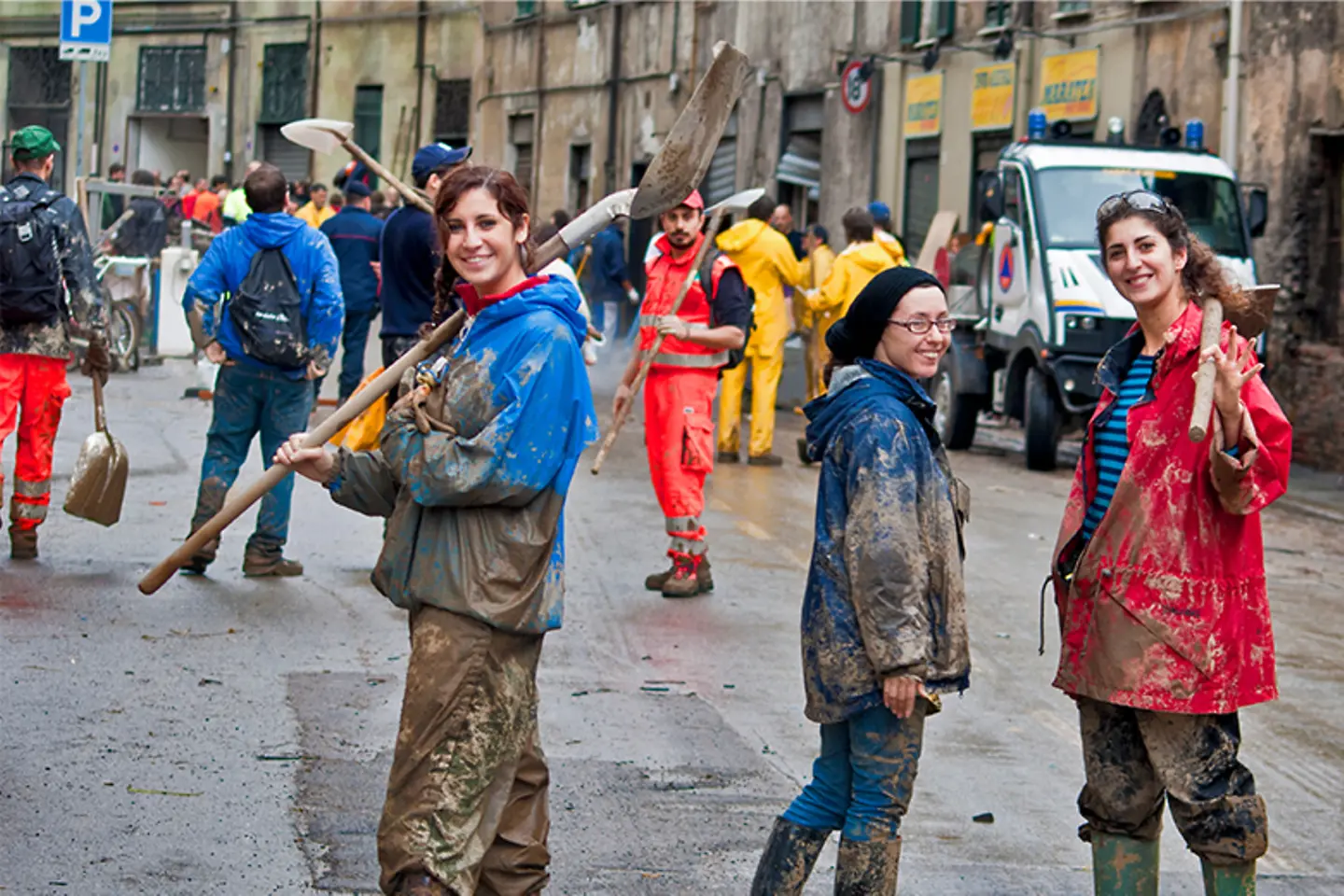
The bad news does not stop: extreme weather situations, flood disasters, severe storms. But there is a ray of hope – as drastic as the events are, equally great is the willingness of many to spontaneously support the professional emergency services. But how are helpers used effectively? One possibility: the socio-technical solution, KatHelfer. The platform is scheduled to be launched in the Spring of 2025.
Climate change is leading to more frequent environmental disasters. Professional emergency organizations such as the fire department, disaster control organizations, the Red Cross, and others are pushing their limits to help people in these exceptional situations. And hence any additional help comes in handy – the dedicated commitment of volunteers for the local people is often overwhelming. Spontaneous helpers organize themselves in social networks or through messenger services to support the emergency services. But in order for the help to reach where it is needed, a well-coordinated organization is needed in the midst of all the chaos. Otherwise, valuable time will be wasted until volunteers with the necessary skills are in the right locations.
In Germany, a project team of 25 partners from science, business, administration, emergency services, and the general public, led by T-Systems, has therefore been developing KatHelfer since 2023. In 2024, the solution was subjected to several practical tests and further developed with the insights gained from these tests. The solution, funded by the Federal Ministry of Education and Research, is to be launched in the market in the Spring of 2025 and will support states and municipalities in the future to enable better coordination of volunteers.
KatHelfer is intended to give states and municipalities the opportunity to make better use of the commitment of volunteers. This is because the overall technical solution includes an interface for apps such as messengers on the one hand, and on the other hand, it can aid network operations centers and support the digital processes of authorities and organizations with security tasks (known as “Behörden und Organisationen mit Sicherheitsaufgaben” in Germany). KatHelfer provides a central IT system that can be integrated into the existing warning and helper systems and automatically assigns tasks to spontaneous helpers in crisis situations.
During development, the partners involved focused on user-friendly, easy access for the volunteers. Because if an emergency occurs, it must be quick and convenient to register and use the solution. Volunteers indicate their skills, available resources, and possible deployment times, while the authorities enter the need for support and possible deployment locations. Using a matching algorithm, those seeking help and those helping are then efficiently brought together. The detailed entries help to distribute the volunteers in the best possible way. Registered volunteers receive assignments through chat and can exchange ideas with the coordinating authorities. The platform uses channels for communication that users usually already have on their smartphones, such as WhatsApp, Signal, or Telegram. KatHelfer thus enables rapid mobilization and coordination. Volunteers can start their assignment in this way without major delay.
The system, which will be implemented according to nationwide standards and will have numerous interfaces to other applications, will also be open to the police, the fire brigade, and the Federal Agency for Technical Relief to add missions for volunteers. KatHelfer could thus become a standard like the NINA app, for example. It can not only help in extreme natural disasters, but also provide support during smaller crises such as hot days. The solution, with its functions and usability, is expected to be widely adopted in Germany. The more organizations and dispatch centers use the platform and communicate their needs, the more valuable it will become in crisis situations.